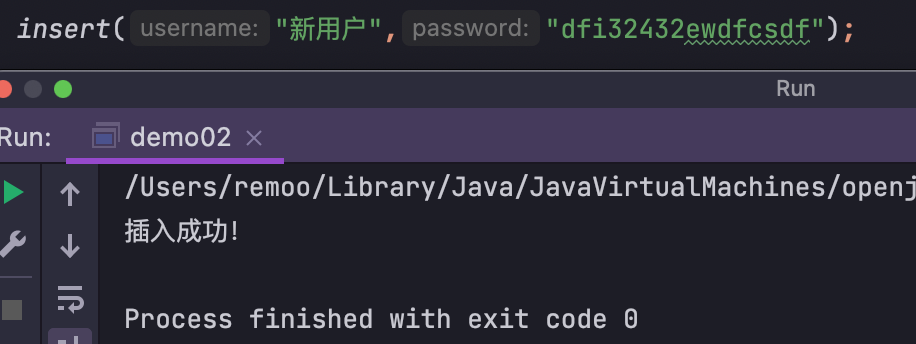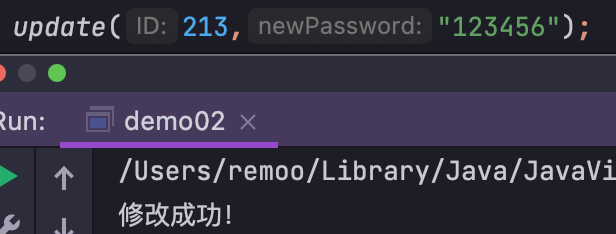第一章:插入使用.executeUpdate();
返回的是受到影响的数据条数。
public static boolean insert(String username,String password){
Connection con=null;
PreparedStatement pstmt =null;
ResultSet rs =null;
try {
con = JDBCUtils.getConnection();
String sql = "insert into user(username,password) values(?,?)";
pstmt = con.prepareStatement(sql);
pstmt.setString(1,username);
pstmt.setString(2,password);
int result = pstmt.executeUpdate();//返回印象的行数
System.out.println("插入成功!");
return true;
} catch (Exception e) {
e.printStackTrace();
}finally{
JDBCUtils.close(con,pstmt,rs);
}
return false;
} 

第二章:删除数据
传递id删除。
public static boolean delete(int ID){
Connection con=null;
PreparedStatement pstmt =null;
ResultSet rs =null;
try {
con = JDBCUtils.getConnection();
String sql = "delete from user where id = ?";
pstmt = con.prepareStatement(sql);
pstmt.setInt(1,ID);
int result = pstmt.executeUpdate();//返回印象的行数
if(result>0)
System.out.println("删除成功!");
else
System.out.println("删除失败!");
return true;
} catch (Exception e) {
e.printStackTrace();
}finally{
JDBCUtils.close(con,pstmt,rs);
}
return false;
}


第三章:修改数据
public static boolean update(int ID,String newPassword) {
Connection con = null;
PreparedStatement pstmt = null;
ResultSet rs = null;
try {
con = JDBCUtils.getConnection();
String sql = "update user set password = ? where id = ?";
pstmt = con.prepareStatement(sql);
pstmt.setString(1, newPassword);
pstmt.setInt(2, ID);
int result = pstmt.executeUpdate();//返回影响的行数
if (result > 0)
System.out.println("修改成功!");
else
System.out.println("修改失败!");
return true;
} catch (Exception e) {
e.printStackTrace();
} finally {
JDBCUtils.close(con, pstmt, rs);
}
return false;
}测试:
main中调用:
update(213,"123456");





